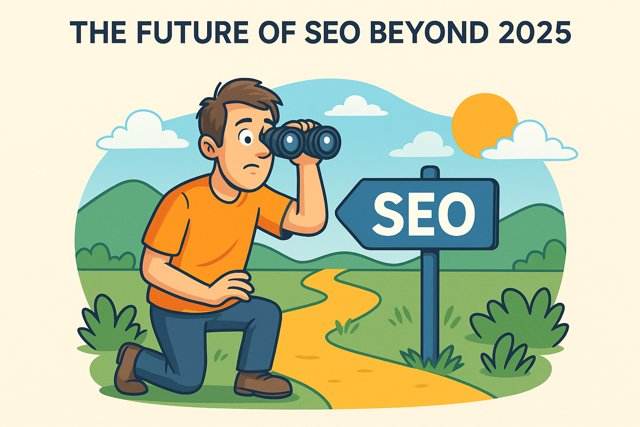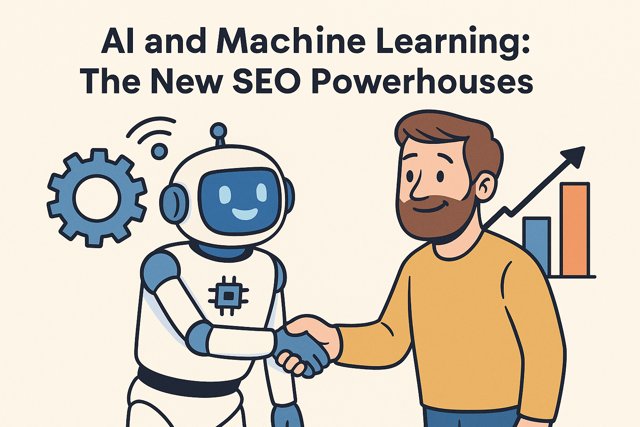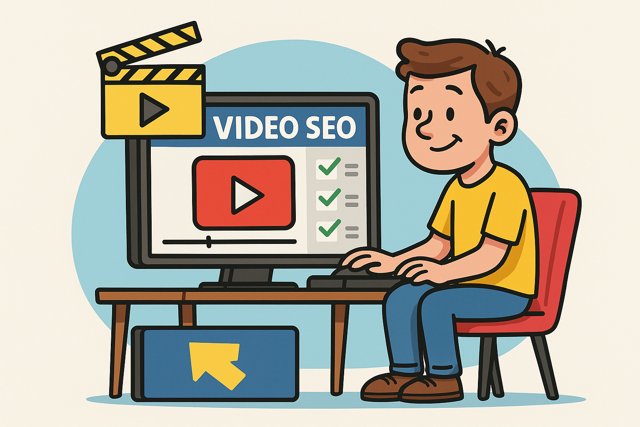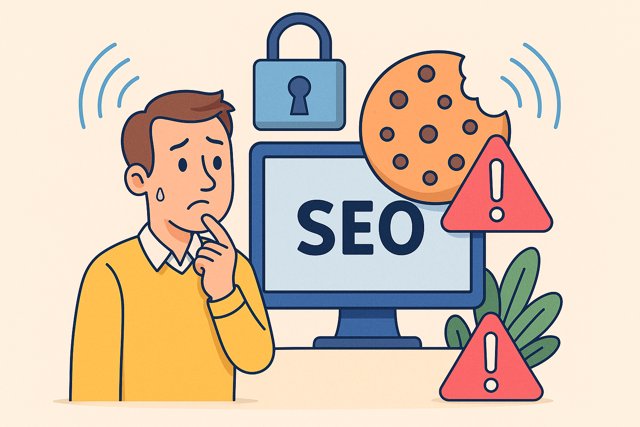
Introduction: The SEO Landscape is Changing Fast
SEO isn’t what it used to be. Darren, who’s been running a fishing tackle website since 2015, remembers when stuffing keywords was all the rage. Today? Things are way more complex — and fast-moving. As we approach 2026, the world of search is evolving into something almost unrecognizable. Let’s peek into tge future of SEO
AI, voice search, mobile-first indexing, and user intent have turned SEO into a strategic battlefield. If business owners want to survive and thrive, they need to understand what’s coming next.
This post will unpack the biggest future trends in SEO and show you how to prepare your business — no jargon, just actionable insights, with a bit of Darren’s classic missteps sprinkled in for fun.
1. AI and Machine Learning: The New SEO Powerhouses
Search engines like Google are using AI more than ever to interpret queries and rank pages. The days of keyword matching are fading fast.

What’s Changing?
Google’s RankBrain and BERT algorithms understand user intent better than humans in some cases. They’re trained to decipher conversational queries, synonyms, and the context behind searches.
For Darren, this means writing natural, helpful content is now more important than cramming exact keywords. Darren’s old tactic of repeating “cheap fishing rods UK” doesn’t cut it anymore.
What Should You Do?
- Focus on user intent and create content answering real questions.
- Use natural language that matches how people actually talk.
- Think about semantic SEO — related topics and concepts instead of isolated keywords.
2. Voice Search: Talk, Don’t Type
With smart speakers and voice assistants becoming mainstream, voice search is skyrocketing.
Why Voice Search Matters
People don’t talk to Alexa like they type into Google. They ask full questions, like “What’s the best carp rod for beginners near me?”
For Darren, this meant updating his content with conversational phrases and FAQ sections — stuff he’d ignored for years.
How to Optimize for Voice
- Use long-tail, question-based keywords.
- Structure content with clear questions and answers.
- Make sure your site loads fast and is mobile-friendly — voice searches happen on the go.
3. Mobile-First is Already Here — And It’s Non-Negotiable

Google ranks sites based on their mobile version first — desktop comes second. If your mobile site sucks, your rankings suffer.
Darren’s site was notoriously clunky on phones — tiny buttons, slow load times, and jumbled menus. That cost him traffic until he fixed it.
What’s the Best Practice?
- Use responsive design.
- Test regularly with Google’s Mobile-Friendly Test.
- Prioritize fast loading times on mobile.
- Keep navigation simple and clear.
4. User Experience (UX): The Secret SEO Weapon
Google increasingly rewards sites that offer a great user experience. UX now heavily influences rankings through Core Web Vitals.
What Are Core Web Vitals?
They measure how quickly pages load, how fast they become interactive, and how stable the layout is while loading.
Darren ignored these metrics for ages until a competitor’s site outranked him just because it loaded faster and felt smoother.
How to Improve UX for SEO
- Optimize images and use lazy loading.
- Reduce heavy scripts and unnecessary plugins.
- Ensure buttons and links are easy to tap.
- Avoid intrusive pop-ups that annoy users.
- Design for easy reading: good contrast, clean fonts, and logical structure.
5. Content is Still King — But Context is Emperor
High-quality content remains vital, but Google now judges content contextually. Thin or irrelevant content won’t rank, no matter how well optimized.
Darren once wrote a 500-word blog stuffed with keywords, but it tanked because it didn’t truly help readers.
What’s the Future of Content?
- Go deep: create comprehensive, well-researched guides.
- Use multimedia like videos and infographics to boost engagement.
- Update old content regularly.
- Answer specific questions your audience is asking.
6. E-A-T: Expertise, Authoritativeness, Trustworthiness
Google’s E-A-T criteria have become a cornerstone of SEO. It rewards sites with proven expertise and trust signals.
Darren learned this the hard way after posting some dubious fishing tips that got flagged.
How to Build E-A-T
- Showcase your credentials and experience.
- Get authoritative backlinks.
- Encourage positive reviews and testimonials.
- Maintain a professional, transparent site.
7. Video SEO: The Visual Future

Videos are dominating online content, and search engines are giving more weight to video results.
Darren started making short clips on rod selection and saw engagement soar.
Video SEO Tips
- Optimize video titles and descriptions with keywords.
- Use transcripts and captions.
- Host videos on platforms like YouTube and embed them.
- Create engaging, high-quality content that answers user questions.
8. Local SEO: The “Near Me” Revolution
Local search is booming. More people are searching for services “near me” on mobile.
Darren’s shop benefits from appearing in Google’s local pack with his accurate business info and positive reviews.
How to Improve Local SEO
- Claim and optimize your Google Business Profile.
- Get consistent NAP (Name, Address, Phone) citations.
- Collect and respond to local reviews.
- Use local keywords and create location-specific content.
9. The Importance of Technical SEO in the Future
Technical SEO remains critical. Without a well-structured, crawlable site, even the best content won’t rank.
Darren had tons of crawl errors and slow server responses that limited his visibility.
Technical SEO Essentials
- Fix crawl errors and broken links.
- Implement structured data/schema markup.
- Ensure site security with HTTPS.
- Improve server speed and uptime.
- Use XML sitemaps and robots.txt correctly.
10. The Growing Role of AI in SEO Strategy
Artificial Intelligence isn’t just for search engines — it’s also a game-changer for SEO practitioners and business owners.
How AI Helps SEO
AI tools help analyse keyword trends, user behaviour, and competitor strategies faster than humans ever could. Darren’s friend Dave started using AI-powered SEO tools to spot gaps Darren missed.
AI also aids in generating content ideas, optimizing meta tags, and personalizing user experiences on websites.
What Darren Should Do
- Use AI for keyword research and content gap analysis.
- Employ AI to optimize page titles and meta descriptions.
- Leverage AI chatbots to enhance customer interaction and engagement.
AI won’t replace human creativity but can make your SEO smarter and more efficient.
11. Mobile Commerce and SEO: Prepare for the Mobile Buyer
More people are shopping on mobile devices than ever before. Google knows this and is prioritizing mobile commerce in its rankings.
Darren saw his competitor’s mobile shop outrank him just because it was faster and easier to use on phones.
Tips for Mobile Commerce SEO
- Simplify checkout processes on mobile.
- Use large, tappable buttons and clean layouts.
- Optimize product pages for voice search.
- Make sure images and videos load quickly on mobile.
12. The Power of User-Generated Content (UGC)

Customer reviews, Q&A sections, and community forums are becoming crucial SEO assets.
Darren finally added a review section on his rod product pages and noticed his site gained more trust and traffic.
Why UGC Matters
- Builds trust and boosts E-A-T signals.
- Provides fresh, keyword-rich content regularly.
- Encourages repeat visits and engagement.
How to Harness UGC
- Enable reviews on your products and services.
- Moderate for quality and authenticity.
- Use UGC in social media and email campaigns.
13. Privacy and SEO: Navigating a Cookieless Future

With privacy regulations tightening, cookies are disappearing. This changes how marketers track and target users.
Google plans to phase out third-party cookies by 2024, affecting ad targeting and analytics.
What It Means for SEO
- Focus on first-party data collection (your own website visitors).
- Improve site trust and transparency to encourage direct engagement.
- Use privacy-compliant tools to measure SEO success.
Darren had to stop relying on sketchy tracking pixels after a privacy scare. Now he builds direct relationships with customers instead.
14. The Rise of Visual Search
Visual search technology lets users upload images instead of typing queries.
Darren’s competitor got a boost by optimizing product images with clear alt text and structured data — making them easier to find via Google Lens.
How to Optimize for Visual Search
- Use high-quality images with descriptive alt text.
- Implement structured data for products.
- Provide multiple images showing different angles.
Visual search is still emerging, but it’s a trend to watch.
15. Building a Brand Beyond SEO
Search engines love strong brands. Brand searches show trust and loyalty, which boosts rankings.
Darren realized that while SEO drives traffic, his brand story and reputation keep customers coming back.
How to Build Your Brand
- Create consistent, valuable content across platforms.
- Engage with your audience on social media.
- Get featured in industry publications.
- Encourage word-of-mouth and referrals.
SEO alone isn’t enough — brands that resonate will dominate the future.
16. Video, Podcasts, and Multimedia Content
The future of SEO includes diverse content types beyond text.
Darren started a podcast about fishing tips and embedded videos on his site, increasing time spent by visitors and signaling quality to Google.
Why Multimedia Matters
- Appeals to different user preferences.
- Increases engagement and shares.
- Boosts time on site — a positive SEO factor.
How to Leverage Multimedia
- Host videos on YouTube or Vimeo with SEO-optimized titles.
- Create transcripts for podcasts and videos.
- Use multimedia content to complement blog posts.
17. Local SEO Evolves with Hyper-Local Targeting
Hyper-local SEO focuses on reaching customers within a very specific radius.
Darren’s shop uses Google Posts and local event sponsorships to connect with nearby anglers.
How to Win at Hyper-Local SEO
- Create location-specific landing pages.
- Use Google My Business to post updates.
- Engage with local communities on social media.
- Collect reviews from local customers.
Local SEO will remain critical for brick-and-mortar businesses.
18. Monitoring and Adapting: The SEO Never Stops

SEO is never “done.” It requires ongoing monitoring and adjustment.
Darren now reviews his Google Search Console reports monthly and uses tools like Ahrefs to track competitor moves.
What to Monitor
- Keyword rankings
- Organic traffic trends
- Backlink quality and quantity
- User engagement metrics
Regular audits and updates keep your SEO ahead of changes.
Conclusion: Be Like Darren, But Smarter
SEO’s future is about embracing change — AI, voice, video, privacy, and user experience all play a part.
Darren’s journey from keyword stuffing to AI-friendly, user-centric content shows the importance of adapting.
Business owners who invest in these future trends, monitor results, and prioritize users will dominate search in 2026 and beyond.
Don’t be left behind. Start today.
Leave a Reply